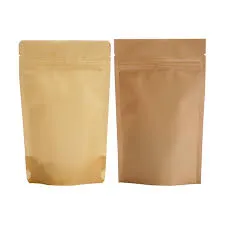- Afrikaans
- Albanian
- Amharic
- Arabic
- Armenian
- Azerbaijani
- Basque
- Belarusian
- Bengali
- Bosnian
- Bulgarian
- Catalan
- Cebuano
- chinese_simplified
- chinese_traditional
- Corsican
- Croatian
- Czech
- Danish
- Dutch
- English
- Esperanto
- Estonian
- Finnish
- French
- Frisian
- Galician
- Georgian
- German
- Greek
- Gujarati
- haitian_creole
- hausa
- hawaiian
- Hebrew
- Hindi
- Miao
- Hungarian
- Icelandic
- igbo
- Indonesian
- irish
- Italian
- Japanese
- Javanese
- Kannada
- kazakh
- Khmer
- Rwandese
- Korean
- Kurdish
- Kyrgyz
- Lao
- Latin
- Latvian
- Lithuanian
- Luxembourgish
- Macedonian
- Malgashi
- Malay
- Malayalam
- Maltese
- Maori
- Marathi
- Mongolian
- Myanmar
- Nepali
- Norwegian
- Norwegian
- Occitan
- Pashto
- Persian
- Polish
- Portuguese
- Punjabi
- Romanian
- Russian
- Samoan
- scottish-gaelic
- Serbian
- Sesotho
- Shona
- Sindhi
- Sinhala
- Slovak
- Slovenian
- Somali
- Spanish
- Sundanese
- Swahili
- Swedish
- Tagalog
- Tajik
- Tamil
- Tatar
- Telugu
- Thai
- Turkish
- Turkmen
- Ukrainian
- Urdu
- Uighur
- Uzbek
- Vietnamese
- Welsh
- Bantu
- Yiddish
- Yoruba
- Zulu
how to seal a bag
How to Seal a Bag A Comprehensive Guide
Sealing a bag might seem like a simple task at first glance, but there are several methods and considerations to ensure that your food, items, or valuables are protected. Whether you are packing snacks for a trip, preserving leftovers, or storing important documents, knowing the best way to seal a bag can make all the difference. In this article, we will explore various techniques to seal different types of bags effectively.
1. Choosing the Right Type of Bag
Before sealing a bag, it’s crucial to choose the appropriate type based on your needs. Common types include
- Plastic Ziplock Bags Ideal for food storage and travel. They are resealable and come in various sizes. - Vacuum Seal Bags Excellent for preserving food, they remove air and can extend shelf life significantly. - Paper Bags Good for dry items or groceries, but not suitable for liquids. - Reusable Silicone Bags Versatile and eco-friendly, these bags can be sealed tightly and reused multiple times.
2. Preparing the Bag for Sealing
Before you seal any bag, ensure that it is clean and dry. If you’re using a Ziplock bag, lay it flat and open it wide to allow easy access. For vacuum seal bags, it’s essential to fill them properly without overstuffing, as this can prevent a proper seal.
Let’s dive into different sealing methods based on bag types
Plastic Ziplock Bags - Method Simply fill the bag, remove excess air, and press down the zipper until it clicks shut. For maximum freshness, try to push out as much air as possible before sealing. - Tip Use a straw to suck out excess air for a tighter seal, especially for food items.
how to seal a bag

Vacuum Seal Bags - Method Place your items inside the bag, leaving a few inches of space at the top. Insert the open end into the vacuum sealer, and follow the machine’s instructions to eliminate air and seal the bag. - Tip Ensure that there are no wrinkles along the sealing edge for a successful vacuum seal.
Paper Bags - Method After filling the paper bag, fold the top down tightly three or four times and, if possible, use tape to secure it. For added protection, place the paper bag inside a plastic bag. - Tip This method is not airtight, so it’s best for dry goods consumed soon after packing.
Reusable Silicone Bags - Method Fill the bag, press the air out, and then zip or press the closure to seal it. These bags can also be placed in the freezer or heated, making them a versatile option. - Tip Ensure the sealing mechanism is clean to create a tight closure.
4. Storage Tips for Sealed Bags
Once you have successfully sealed the bags, make sure to store them properly. For food items, label the bags with the contents and the date to keep track of freshness. Store bags in cool, dark places to minimize spoilage, and for vacuum-sealed items, ensure they remain in a stable environment to avoid moisture buildup.
5. Common Mistakes to Avoid
To ensure long-lasting seals, avoid these common mistakes - Overfilling the Bag Leave sufficient space for sealing. - Ignoring Air Pockets Always try to remove air from bags where possible. - Inadequate Cleaning Ensure that sealing edges are clean to avoid compromising the seal.
Conclusion
Sealing a bag properly is essential for the longevity and safety of your items, especially when it comes to food preservation. By understanding the different types of bags and methods of sealing, you can choose the best approach for your needs. Whether you are packing for a trip, storing food, or organizing your environment, mastering the art of sealing bags will make your life easier and more efficient. Remember, a well-sealed bag is not just about convenience; it’s an essential step in maintaining the quality of what’s inside!













